#rüppell's vulture
Text

^Image credit: Lip Kee
Rüppell's vulture (Gyps rueppelli)
Rüppell's Vulture, also known as Rüppell's Griffon Vulture (not to be confused with the Griffon Vulture) is considered the world's highest-flying bird, with confirmed evidence of flying at 11,300 meters (37,000 feet) above sea level. They are mainly native to Africa, particularly East Africa and the Sahel region.
#gyps ruepelli#rüppell's vulture#rüppell's griffon vulture#vultures#vulture#birds of africa#birdwatching#bird record holders#bird flight#birding#birds#bird#bird facts#bird fact#bird behaviour#ornithology#bird of the day#birdoftheday#birdblr#ornithologist#birb#birbs#i love birds#special interest
138 notes
·
View notes
Text
290 notes
·
View notes
Text

Today is #Internationalvultureawarenessday! In honor, here is my first ever sketch of one, the Rüppell’s vulture✨
They are considered the highest-flying bird, with the highest confirmed altitude at 11,300m!!!
Sadly they are, along with many large birds of prey, critically endangered.
(Yes I got too excited and I misspelt the latin name😭)
#procreate#animal art#artists on tumblr#nature art#nature#digital artist#birds of prey#vulture#rüppell’s vulture#bird art#artistsoninstagram#large birds#vulture day
12 notes
·
View notes
Text
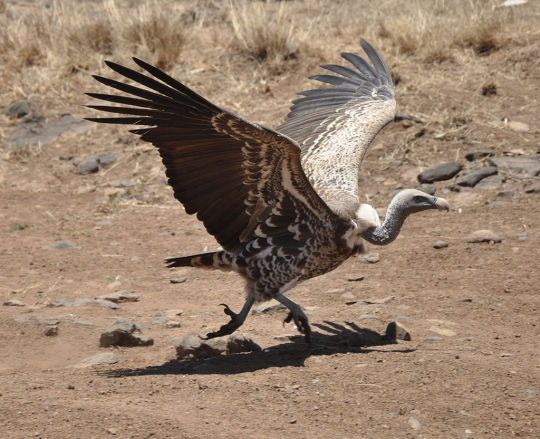
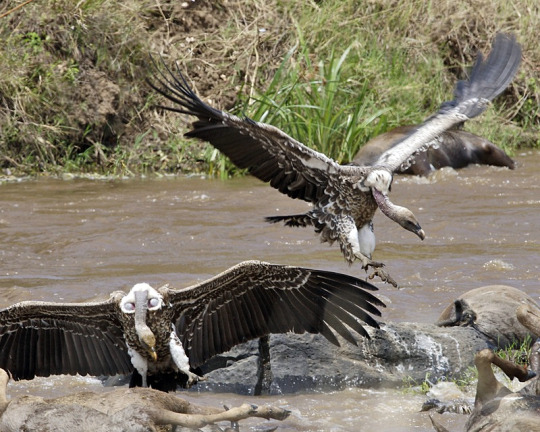
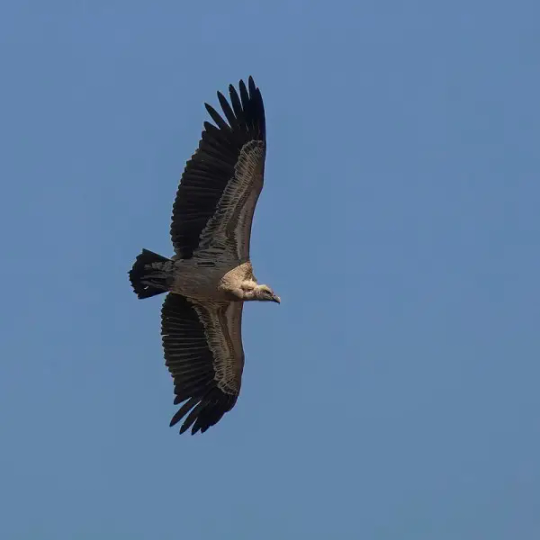
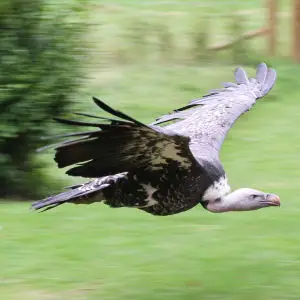

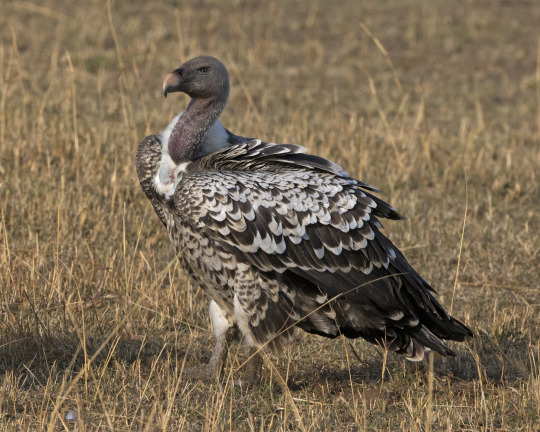
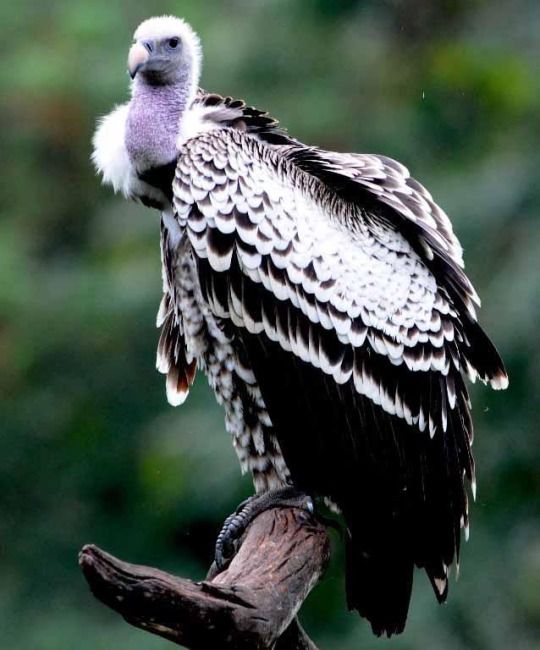
Rüppell's vulture also called Rüppell's griffon vulture, named after Eduard Rüppell, is a large bird of prey in the genus Gyps which is native throughout the sahel and eastern Africa including the countries of Algeria, Benin, Burkina Faso, Burundi, Cameroon, the Central African Republic, Chad, The Ivory Coast, Djibouti, Eritrea, Ethiopia, Gambia, Ghana, Guinea, Guinea-Bissau, Kenya, Mali, Mauritania, Niger, Nigeria, Rwanda, Senegal, Somalia, South Sudan, Sudan, Tanzania, Togo, and Uganda. Here they tend to inhabit grasslands, mountains, and open woodland. Rüppell's vultures are diurnal and very social birds, roosting, nesting, and feeding in large flocks. They spend much of their time flying at great altitudes, using strong winds and thermals to efficiently soar they are known to regular cruise at upwards of 20,000ft (6,000m) above the ground with some known to go as high as 37,000ft (11,300m) making them the highest flying bird. These vultures locate food by sight only, and often follow herds of animals. Once they find a carcass they swoop down, land a little way off, then bound forward with wings spread and their long neck outstretched. Even amongst old world vultures, Rüppell's vultures are specialized feeders with a spiked tongue and strong beak they can strip flesh with ease, and feed upon pelts, hides, and even the bones themselves. Reaching around 33 to 41in (85 -103cms) long, 14 – 20lbs in weight, with a 7.5-8.6ft (2.26 -2.6m) wingspan. They are one of the largest vultures in Africa, both sexes sport mottled brown or black feathering overall with a whitish-brown underbelly and thin, dirty-white fluff covering the head and neck. The base of the neck has a white collar, the eye is yellow or amber, the crop patch deep brown. The head does not have feathers. This species of vulture is considered to be monogamous, forming lifelong breeding pairs. They nest on cliffs in colonies up to a 1,000 strong. After courtship a pair will work together to build a nest using sticks, grass, and leaves that they have gathered or stolen from other nests, here the mother will lay 1 egg. Both parents share in incubation of their egg over a period of 55 days. Once the chick hatches, both parents will feed and tend to it for about 150 days when it fledges. Young remain dependent on their parents after fledging, not reaching independence until the next breeding season. Under ideal conditions a ruppells vulture may live up to 50 years.
#pleistocene#pleistocene pride#pliestocene pride#pliestocene#bird#dinosaur#vulture#ruppells vulture#africa#asia#europe#eurasia#flying#griffon#griffin#griffon vulture
436 notes
·
View notes
Text
Imo I think the dragons in Wof would have to have hollow bones. For how big they are it's kinda necessary for them to even get off the ground.
For Skywings I think they'd be especially light weight. They'd need a larger lung capacity to live / fly so high up. So basically think of the Rüppell's Vulture. So a Skywing would want to wear lots of armor to protect themselves since they are particularly vulnerable to attacks (just like real birds!)
25 notes
·
View notes
Text
General Vulture Fun Facts
Just to share some more love!
Vultures in general
Vultures are critically important to keeping an ecosystem healthy by cleaning up carcasses and preventing the spread of disease. They have incredibly acidic stomachs with a pH of about 1, causing them to be able to digest diseases including rabies and anthrax. Through eating carrion, they destroy harmful bacteria found in rotting meat.
Vultures are a major conservation concern. Of the 23 species of vultures, 9 are critically endangered, 2 are endangered, 2 are vulnerable, 3 are near threatened, and 7 are least concern.
Most vultures have featherless necks and heads. This is partially to help them stay clean when they feed by reaching their heads into carcasses; with bald heads, they can more efficiently clean their heads and the sun can bake off detritus more easily. This adaptation also helps them regulate their temperatures.
Old World and New World vultures are only superficially similar in filling similar ecological niches. I'll go into more depth below!
Old World Vultures
Old World vultures are members of the order Accipitiformes and family Accipitridae, which includes hawks and eagles. Many of these vultures are no more closely related to one another than they are to other members of Accipitridae.
They can be generally divided into two major clades, Aegypiinae (cinereous, red-headed, lappet-faced, white-headed, hooded, and all Gyps vultures) and Gypaetinae (bearded, palm-nut, and Egyptian vultures).
While some New World vulture species forage using their sense of smell, Old World vultures have poor senses of smell and find food exclusively via sight.
Many Gyps vultures are known as griffon vultures in at least one of their common names (G. fulvus, Eurasian griffon vulture; G. coprotheres, cape griffon; G. rueppelli, Rüppell's griffon vulture; G. himalayensis, Himalayan griffon vulture).
Most Old World vulture species are of conservation concern. The most dramatic declines are in Asia due to accidental poisoning by diclofenac, a problem known as the Indian Vulture Crisis. It is caused by cattle being treated with the drug diclofenac; when these cattle die they are consumed by vultures, but diclofenac causes fatal kidney failure in vultures. This crisis largely affects Gyps and red-headed vultures and has caused a 99% decrease in Indian vulture populations since about 1990. Major declines in Africa are caused by poaching and intentional poisoning.
In ancient Egypt, vultures were associated with purity and motherhood as well as the cycle of death and rebirth.
New World Vultures
New World vultures are placed in the family Cathartidae, but nobody can agree where to put Cathartidae. It was originally in the order Falconiformes. It was then moved to the order Ciconiiformes (storks and herons) due to erroneous studies but later removed. New World vultures are now considered to be most closely related to Accipitriformes raptors, and Cathartidae may now be placed in Accipitriformes with the Old World vultures, or in its own closely-related order Cathartiformes.
These vultures can be generally grouped into two clades, one consisting of the black vulture and the Cathartes vultures, and the other including the king vulture and both species of condor.
New World vultures do not posses a syrinx (bird voice box), and so can only hiss and grunt as vocalizations.
Cathartes vultures, meaning the turkey vulture and both yellow-headed vultures, are some of the few birds to have a good sense of smell. This sense makes them the most efficient birds at finding carrion.
Black and king vultures as well as condors will follow Cathartes vultures to carcasses, where they generally tend to dominate. Condors and king vultures are larger than Cathartes vultures, while black vultures are more aggressive. However, these larger vultures are needed to tear open tough carcasses. Therefore, large vultures and Cathartes vultures rely on one another to effectively access food.
New World vultures do not build nests but rather lay their eggs directly on bare surfaces such as cliff ledges.
They cool off via urohidrosis, or urinating on their legs. They cool off as the waste evaporates, similar to how humans cool off as sweat evaporates. This process also kills bacteria accumulated on the legs at carcasses.
King and black vultures are often found depicted in Mayan codices. The king vulture is considered a divine messenger and used to depict the thirteenth day of the month, while the black vulture is associated with death and aggression.
New World vultures may vomit when threatened in order to distract the threat and to lighten themselves enough to take off quickly.
167 notes
·
View notes
Text

New Vic design yea!!
omg when did you get so edgy vic /pos
I wanted to give them a striking appearance, different from any stick figure. An ethereal presence with a mix of “Something is very wrong.” ??
dress? cloak? it’s a combination of both. xe is slaying, your honour.
loosely based on these Rüppell’s Vultures

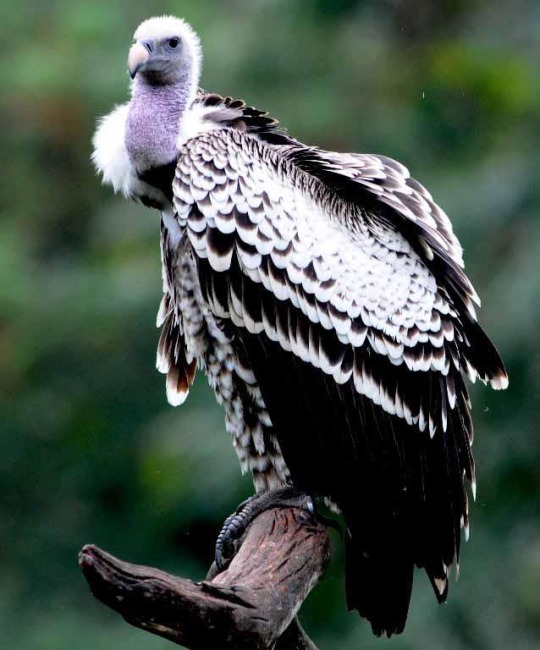
#alan becker#animator vs animation#animation vs minecraft#avm shorts#nicholas’ art corner#ava victim#white/pale eyelashes slap so hard#vic stop slaying you're scaring the children :(
53 notes
·
View notes
Text
Night at the Museum Wing AU
(AU by @multiversal-madness)
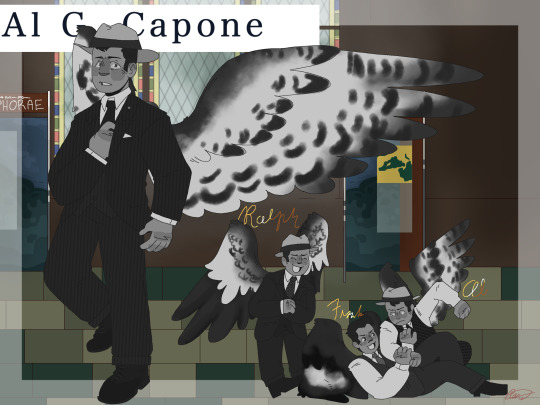
I love this AU so much!
I based Al's wings off of a red-tailed hawk! Al always “thought of himself as “American” rather than Italian or even Italian-American.” (Al Capone by Deirdre Bair) The screech used for the Bald Eagle in Hollywood is actually the call of a red-tailed hawk!
Ralph's wings are based off a Rüppell's Vulture/ a Griffon Vulture. I don't have a lot of reason why, I just felt he should be a large bird of prey with feathers close to Al's. Griffon Vultures hold the record for the highest flying bird in the world!
Frank is based off a Northern Mockingbird. They are known for being very smart birds. They are also very aggressive and territorial, like Frank was. I feel I could have picked a bird of prey to fit in with his brothers, but I think a Northern Mockingbird suits him because of his description of being the best looking and mild-mannered brother.
(Colored Version below the cut)

I love this AU a lot! I want to make more art for it. Multi says that "Those born in and later than 1900 have wings while some born 1890 to 1900 might have wings", which lets all the Capone siblings have wings! Ralph was born in 1894, Frank in 1895, and Al in 1899!
Since I headcanon Jimmy/Richard James "Two-Gun" Hart to be in Jed's group, I'm not sure if he would have wings! Especially since he was born in 1892. Maybe he did, but when he was made into a Miniature, they weren't added?
#frosty's art#NATM#natm 2#natm au#al capone natm#natm al capone#natm Frank Capone#natm Ralph Capone#Al Capone#Ralph Capone#Frank Capone#June. 8#2023#June. 2023#Richard James “Two-Gun” Hart#Jimmy Capone#NATM Wings AU#The small drawing of the Brothers bickering in the corner is based off of an episode of Boardwalk Empire
49 notes
·
View notes
Photo
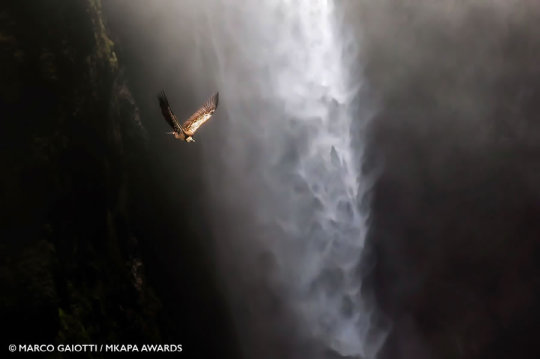
Rüppell’s Vulture | Jinbar Waterfall
By Marco Gaiotti of Genova, Italy
African Wildlife Photography Awards
#marco gaiotti#photographer#genova#italy#ruppells vulture#vulture#animal#bird photography#jinbar waterfall#landscape#waterfall#nature#african wildlife photography awards
31 notes
·
View notes
Text
at long last, the limited life symbols! i might make a post with some alternate ideas i had, but other than that i'm done. i already did the third lifers, the last lifers, the double lifers, the top three (and scott), and the losers.
skizz is a red collared dove. again, i want to keep him as a dove. i chose this species because of the name- it's basically a tie pun.
joel is a rüppell's vulture. he had to be a bird, because of bread bridge. he has vulture vibes. this species is the highest flying bird, which is fitting for the builder of the c s rye.
bdubs is a house mouse. i chose this one because of the family. (i'm really happy with this one but i do not know how to explain it. if ykyk).
tango is a sooty falcon. i had to make ties birds because of skynet. tango definitely has falcon vibes, and he's sooty from all the fire.
scar is a spotted hyena. mainly for the vibes, they're also called the laughing hyena.
cleo is a grizzly bear. they're a mama bear. what more can i say.
bigb is a golden mantella frog. he had to be a frog, and this one had the best colors.
grian is a black-billed magpie. he's very magpie-like, collecting everyone's time. i chose this species for the vibes.
etho is a greater sooty owl. pretty much the same as tango. he's sooty from all the gunpowder in his farm.
pearl is a rosy footman moth. the colors look kind of like the frogs on the tower.
it's over! i'm done!! (unless i post the alternates, of course). this has driven me insane. if you have any other ideas, or want to use these for your own projects, feel free to tag me.
#trafficblr#traffic smp#life series#life smp#limlife#limited life#24l smp#24lsmp#24life#lilife#skizzleman#smallishbeans#bdoubleo100#tangotek#goodtimewithscar#zombiecleo#bigbstatz#grian#ethoslab#pearlescentmoon#mcytblr#mcyt#mcyt traffic signs#zdae thinks
49 notes
·
View notes
Text

a rüppell’s griffon vulture moodboard with general dull aesthetics. . .
a blessing. . . for @lethargyhill. sorry, i’m not super familiar with this animal / it’s habitat so i kept it basic. hope you still like it!
#. . .blessings#therian moodboard#kin moodboard#aviankin#avian therian#birdkin#bird therian#vulturekin#vulture therian
22 notes
·
View notes
Text

Dimitar Nedelchev
Rüppell's vultures. Gyps rueppelli
Lake Ndutu, South Serengeti, Tanzania
28 notes
·
View notes
Note
“What's yalls opinion on the theory that the cub in the Rüppell's Revenge decor is Wenet as a cub”
At this point, it's more of a truth than a theory to me. Like, it looks EXACTLY like her (plus, getting kidnapped by a vulture as a starving cub would definitely explain her demeanor).
.
10 notes
·
View notes
Text
Psych Wings AU
with lots of help from @cadaverthesneaky
Shawn: Green-Crowned Plovercrest (hummingbird bc ENERGY)
Gus: Laggar Falcon
Juliet: Song Sparrow (these are adorable btw)
Lassie: Daurian Jackdaw
Chief Vick: House Crow
Henry: Great Blue Heron (...fishing)
Buzz: Blue-Tipped Kookaburra
Woody: Rüppell's Vulture
Despereaux: California Gnatcatcher (i think it would be funny if he had big wings bc these birds are small)
#psych#wings au#shawn spencer#burton guster#juliet o'hara#carlton lassiter#henry spencer#chief vick#woody strode#buzz mcnab#pierre despereaux#🍍
7 notes
·
View notes
Text
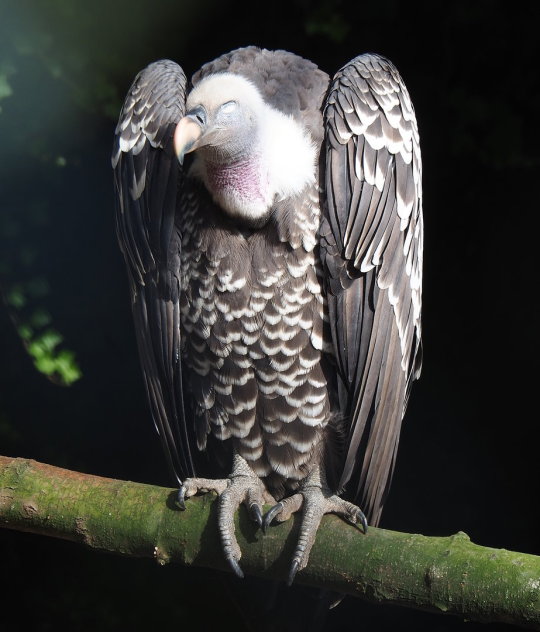
Rüppell's griffon vulture (Gyps rueppelli rueppelli)
@ KevinB
33 notes
·
View notes
Text
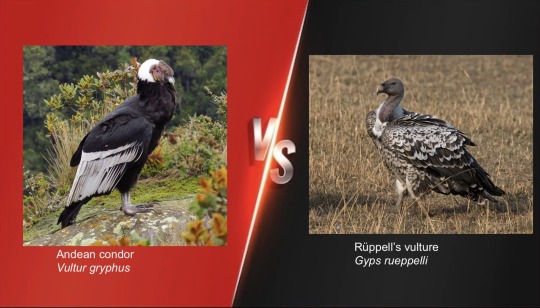
The giant of South America vs the high-flying champion!
Andean condors are the largest birds of prey in the world and, on average, the heaviest flying bird. They weigh from 7.7-15 kg (17-33 lb) and their wingspan can reach up to 3.3 m (10 ft 10 in), but averages around 2.83 m (9 ft 3 in). Their range extends throughout the Andes Mountains in South America. They prefer open, rocky areas. Unlike many raptors, the male is larger than the female and displays a large comb atop his head. At carcasses, these condors are the dominant scavengers in their range. They roost in large groups. They are also one of the longest-lived birds: wild birds may live past 50, and an individual in captivity lived to a whopping 79 years! Andean condors are considered vulnerable, especially in the northern part of their range, due to habitat loss and secondary poisoning.
Rüppell’s vultures live in the grasslands, mountains, and woodlands of East Africa. Like most vultures, they are carrion feeders. These lacy-looking birds have wingspans of 2.26-2.6 m (89-102 in) and a weight from 6.4-9 kg (14-20 lb). They are also the highest-flying birds in the world, regularly soaring at altitudes of 6,000 m (20,000 ft) and also recorded at a record height of 11,300 m (37,000 ft)! They have specialized hemoglobin for absorbing oxygen at high altitudes. Unfortunately, they are critically endangered due to habitat loss, hunting, and poisoning.
20 notes
·
View notes